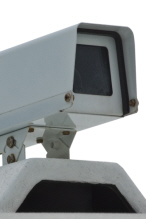 There are three types of surveillance techniques available to local authorities under the Regulation of Investigatory Powers Act 2000 (RIPA 2000). The LexisPSL Corporate Crime team set out how to use these powers correctly.
There are three types of surveillance techniques available to local authorities under the Regulation of Investigatory Powers Act 2000 (RIPA 2000). The LexisPSL Corporate Crime team set out how to use these powers correctly.
Surveillance powers available to councils under RIPA
o the acquisition and disclosure of communications data (such as telephone billing information or subscriber details)
o directed surveillance (covert surveillance of individuals in public places), and
o covert human intelligence sources (CHIS) (such as the deployment of undercover officers)
Local authorities use covert techniques in support of their statutory functions where they are responsible for enforcing the law in respect of: environmental crime; consumer scams; loan sharks; taxi cab regulation; un-derage sales of knives, alcohol, solvents and tobacco; and the employment of minors. CHIS and directed surveillance techniques are used in test purchase operations to investigate the sale of tobacco, alcohol and other age-restricted products.
Following consultation, the statutory code of practice under the Protection of Freedoms Act 2012 (PFA 2012) came into force on 12 August 2013 and applies in England and Wales. It is intended to ensure the public has confidence that surveillance camera systems in public places, including CCTV and Automatic Number Plate Recognition (ANPR), are used to protect and support them rather than spy on them. In addition to making clear the legal obligations in relation to the necessity and proportionality of surveillance camera systems, the code promotes greater transparency on the part of system operators and a climate of surveillance by consent. It also promotes the more effective use of surveillance cameras where they are necessary.
PFA 2012, s 33(1) states that 'a relevant authority must have regard to the surveillance camera code when exercising any functions to which the code relates.'
A relevant authority is specified under PFA 2012, s 33(5) as among others:
o a local authority within the meaning of the Local Government Act 1972 (LGA 1972)
o the Greater London Authority
o the Common Council of the City of London, in its capacity as a local authority
Covert surveillance powers for local councils
Each local council is required to respect the private and family life of each citizen, their homes and correspondence under the Human Rights Act 1998 (HRA 1998). This right is qualified where interference in these rights is necessary and proportionate and carried out in accordance with the law. Where there is an interference by a public authority with the Article 8--rights of a citizen and there is no other source of authority, that the action is unlawful by virtue of the HRA 1998, s 6.
RIPA 2000 regulates the use and method of surveillance which is carried out by public authorities. A council is a public authority under RIPA 2000. A public authority may carry out covert surveillance where this surveillance is directed and not intrusive.
The 2014 revised Codes of Practice: Covert Surveillance and Property Interference and Covert Human Intelligence Sources include the requirement that each council should ensure that authorisations which are granted should be proportionate to the matter under investigation. For example, if the investigation is into dog fouling an authorisation for surveillance may not be proportionate as it involves an invasion of privacy which is disproportionate to the seriousness of the offence.
Directed surveillance powers were used in benefit fraud cases and to tackle anti-social behaviour. Benefit fraud cases are now to be prosecuted by the CPS.
Surveillance inspection and practice
A council's use of surveillance powers is kept under review by the Chief Surveillance Commissioner who will make a report to the council making recommendations. The Commissioner's officers advise local councils on the appropriate procedures, training and best practice to implement to ensure that operate within RIPA.The OSC produces guidance which should be incorporated into council systems and copies of the OSC Proce-dures and Guidance Oversight arrangements for covert surveillance and property interference conducted by public authorities and to the activities of relevant sources 2014 should be provided to the relevant personnel and may form the basis of RIPA training.
Council application for acquisition of communications data
A council has the power to acquire communications data under RIPA 2000 for one of two reasons:
o protecting public health, or
o preventing or detecting crime
Councils are not permitted to use traffic communications data but may request service use information (such as the type of communication, the time of the communication or its duration) and subscriber information (such as billing information). The acquisition of data involves four roles within the council to ensure that the process is implemented lawfully. The application will initially be made by the applicant service, whichever team that may be, eg Audit and Investigation to the designated person. The designated person under RIPA 2000 is appointed to consider and authorise applications. A Single Point of Contact (SPoC) is responsible for providing a gatekeeper or guardian function to ensure that the processes in respect of these authorisations are informed and lawful. The senior responsible officer has overall responsibility for ensuring that the council complies with RIPA 2000 and the Code of Practice.
Protection of Freedoms Act changes to RIPA
PFA 2012, Pt 2, implemented in July 2012, included changes to surveillance methods including CCTV and ANPR systems. This was a response to the fact that CCTV systems were not subject to any specific regulatory arrangements, although the processing of personal data captured by CCTV systems is governed by the Data Protection Act 1998 (DPA 1998) and the Information Commissioner's Office (ICO) has issued guidance to CCTV operators on compliance with their legal obligations under the DPA 1998.
The Secretary of State has provided a new code of practice on the use of CCTV systems as set out above.
A Surveillance Camera Commissioner has been appointed whose functions include encouraging compliance with the code and reviewing its operation. The code includes guidance on surveillance camera systems and the use or processing of the images or information obtained. It also includes requirements on:
o consideration of circumstances to use surveillance camera systems
o types of systems or apparatus
o technical standards for that apparatus
o location of apparatus
o publication of information about systems and apparatus
o standards applicable to those operating or maintaining systems or apparatus
o standards applicable to those using or processing information obtained from a surveillance system or apparatus
o access to and disclosure of the information obtained through a surveillance system or apparatus, and
o procedure for complaints or consultation
Following a review by the government into counter terrorism and security powers, it was concluded that the use of directed surveillance powers by local authorities be confined to those cases where the offence under investigation is subject to a term of imprisonment for six months or more. The decision was met with resistance from local councils who need to use RIPA 2000 to tackle retailers persistently selling alcohol and tobacco to children, which is punishable by a fine rather than imprisonment. The seriousness threshold will be introduced through an order made under RIPA 2000, s 30(3)(b) and is intended to apply to directed surveillance applica-tions.This threshold was implemented on 1 November 2012 so that local councils will only be able to authorise directed surveillance to prevent or detect crime that is punishable by a maximum term of at least six months imprisonment, except in cases of selling alcohol or tobacco to underage people.
It also concluded that the three covert investigatory techniques available to local authorities (directed surveillance, CHIS and communications data) should be subject to judicial approval. This is provided for in PFA 2012, Pt 2, Ch 2. An application for authorisation will still need to be approved by the council's appointed authorising officer but will not come into effect until they have been approved by a magistrate.
Approval may be given by a magistrate where he is satisfied that:
o it is necessary for the purposes set out in RIPA 2000 and is proportionate to what it is intended to achieve
o it has been authorised by a designated person (director level) in the council
o it meets the seriousness threshold which applies to an application for authority for directed surveillance, and
o it specifies the relevant procedures to protect the welfare and safety of any CHIS where the application is for authority for a CHIS
When a magistrate refuses a local authority application he may quash the local authority authorisation. The implementation date for PFA 2012, ss 38 and 39, which brought about this change, was on 1 November 2012. These sections only take effect in respect of:
o authorisations granted or renewed under RIPA 2000, s 22(3), (3B) or (3F) on or after 1 November 2012
o notices given or renewed under RIPA 2000, s 22(4) on or after 1 November 2012
o authorisations granted under RIPA 2000, s 28 or s 29 on or after 1 November 2012
The Criminal Procedure Rules 2014, SI 2014/1610, r 6.27 (Crim PR 2014) sets out the requirements for the content of an application for authorisation from a council.
Crim PR 2014, SI 2014/1610, r 6.28 requires that a magistrate does not exercise his power to quash the authorisation unless the applicant has had two business days from the date of refusal in which to make representations.
So since the introduction of PFA 2012 local authority officers wishing to use covert surveillance must follow the relevant procedures applicable to their own authority which will involve:
o assessing the necessity and proportionality of the use of surveillance techniques
o completing the RIPA authorisation/application forms
o seeking approval from the authorising officer/designated person
o obtaining an order to grant the authorisation from a magistrate
This article was originally published in LexisPSL Corporate Crime.















 There are three types of surveillance techniques available to local authorities under the Regulation of Investigatory Powers Act 2000 (RIPA 2000). The
There are three types of surveillance techniques available to local authorities under the Regulation of Investigatory Powers Act 2000 (RIPA 2000). The 